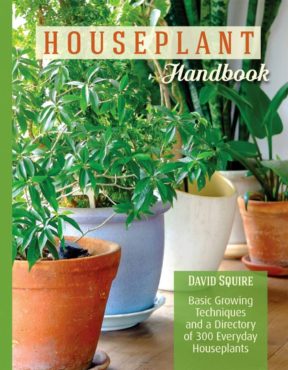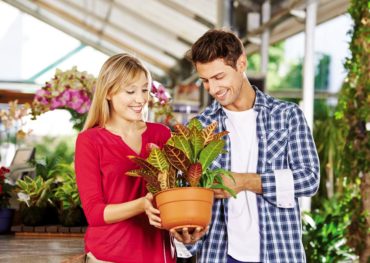 Editor’s note: This excerpt is adapted from David Squire’s book, “The Houseplant Handbook: Basic Growing Techniques and a Directory of 300 Everyday Houseplants.“
Editor’s note: This excerpt is adapted from David Squire’s book, “The Houseplant Handbook: Basic Growing Techniques and a Directory of 300 Everyday Houseplants.“
Choosing and buying plants for the home needs care if they are to create spectacular displays that last a long time. There are several sources of houseplants, including garden centers, plant nurseries, florists and main-street shops. Each has advantages, but whatever the source, it is essential to inspect the plant before buying it (see tips below).
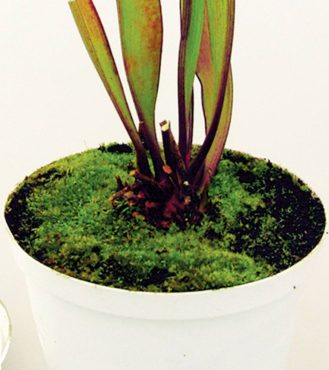
Getting Your Plant Home
- The first stage in ensuring a good display is to get your plant home safely. Here are some hints.
- Either make buying a plant a separate occasion, or the last stop on a shopping expedition.
- In winter, do not put plants in a cold car boot or trunk. Also avoid these areas in summer, as they quickly become excessively hot.
- Avoid putting plants in either cold or hot drafts near open windows. Many plant nurseries and garden centers sell houseplants totally covered in a paper wrapper or plastic sleeve to protect them from knocks and cold winds.
- If possible, leave young children and lively dogs at home when shopping for plants!
Acclimatizing Plants to Your Home
- As soon as possible, get your plants home and remove the wrappings. If left covered, stems and foliage may become distorted. Here are some ideas on how to establish plants indoors.
-
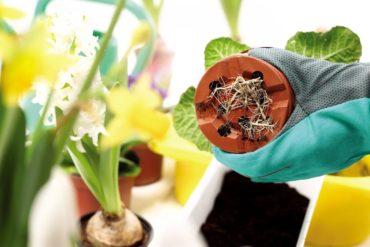
This plant needs to be repotted. Check that the compost is lightly moist, but not saturated and waterlogged.
- Initially, place your plant in a cool or moderately warm room, out of direct and strong sunlight, and away from cold or hot drafts. After a few days, position it in the location with its desired temperature and light intensity.
- If the plant is flowering, avoid bumping it, which may cause buds to fall off.
- If you suspect your plant is contaminated with pests and diseases, isolate and treat it with an insecticide or fungicide.
10 Tips for Buying Houseplants
- Always buy from a reputable source. A cheap purchase may prove expensive if the plant dies a few weeks later.
- Never buy a houseplant that is displayed outside a shop; in winter, such plants become chilled, while in summer, they are exposed to direct, often intense sunlight. Flowering plants suffer most from excessive cold or heat.
-
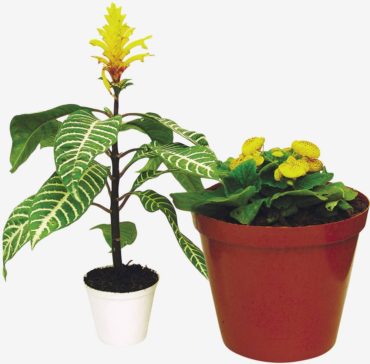
The size of plants and their pots should be in balance. Avoid buying plants that show signs of pests and diseases. They are never a success and may infect houseplants already in your home. Check above and under leaves, as well as on flowers and stems.
- Never buy a plant with masses of roots growing out of drainage holes in the pot’s base. This indicates that the plant has been neglected and needs repotting. Additionally, growth may have been retarded.
- When buying flowering plants, ensure there are plenty of flower buds waiting to open. Avoid plants that are in full flower — their display will be short-lived.
- Do not buy plants that are wilting; this indicates neglect from which the plant may not recover.
- Check that the compost is evenly moist. Plants can wilt through excessive watering as well as from being kept dry.
- Avoid buying plants with green mold on the compost’s surface; it indicates neglect and excessive watering.
- Only buy clearly labeled plants, as this indicates a reputable source.
- Do not buy large plants that are growing in very small pots, or small plants growing in very large pots. Apart from an imbalance of size and a lack of stability, large plants in small pots need frequent watering, while it is difficult to keep the moisture content of the compost of small plants in large pots even and not too wet.




